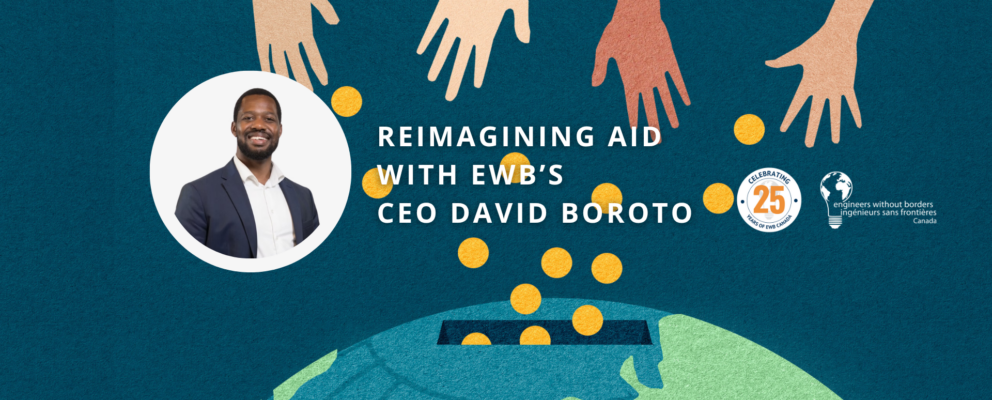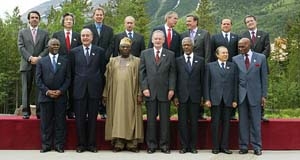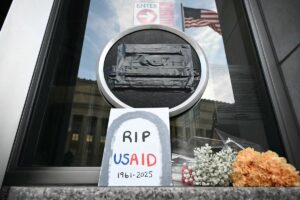
Aid, Reimagined: A Tool for Prosperity, Not Charity, an Op-Ed
Only a few decades ago international aid was booming. Inspired by the 1985 Live Aid concert and the launch of the Millennium Development Goals at the turn of the century, a generation believed the world could — and should — end extreme poverty in our lifetime.
In Canada, that ambition took centre stage at the 2002 G8 Summit in Kananaskis, where African leaders were invited as full participants for the first time. The resulting Africa Action Plan promised a bold new partnership grounded in mutual accountability, support for African-led development and a commitment to eradicate poverty.

Today, the global aid landscape looks very different. In 2024, official development assistance fell by 7% — the first global decline in six years, according to the OECD. Comparing the two Kananaskis G7 summits of 2002 and 2025 shows just how much has changed. The former focused on ending poverty and strengthening development partnerships. The latter emphasized security threats, conflicts, and geopolitical risks.
Donor countries are retreating. Germany, France, and the UK have all cut aid budgets. More and more, assistance is absorbed by humanitarian need and conflict response — essential, but often at the expense of long-term development.
The dismantling of USAID programming has been a reckoning. Tens of billions of dollars in development aid vanished overnight, leaving millions without essential services and destabilizing ecosystems of local and global development organizations.

It’s still unclear where Canada stands in this shifting landscape. But it raises a hard question: is aid broken?
In many ways, yes. After decades of development spending, many recipient countries of development assistance remain trapped in poverty, while countries like China and Indonesia have reduced poverty at scale through investment, and industrialization.
Aid has too often been top-down, shaped by donor interests rather than local needs. It has been at fault for creating dependency, weakening domestic systems, and serving as a tool of foreign policy more than a catalyst for sustainable growth.
Yet despite its flaws, aid remains necessary. In today’s economy — where capital flows chase quick returns — aid still plays a vital role.
Aid must go where investment will not.
Trade and investment are the engines of growth. But not all growth is inclusive — and not all places attract capital. Market forces will not build clinics in remote villages. They will not invest in schools where there are no roads, no power, and no internet. Capital does not flow where there is no return. But aid can.
Aid is the tool we use to invest in people and places left behind. It’s how we fund education, primary health care, clean water, and social protection systems. These are not luxuries. They are the foundations of prosperity.
Any strong economy relies on a healthy, skilled, and educated population. But investments in health and education rarely show up as returns on a financial balance sheet — even though they are arguably the most important economic investments a society can make.
Infrastructure is another example. Roads, energy grids, and water systems create the conditions for commerce, mobility, and dignity. Yet in hard-to-reach or sparsely populated regions, infrastructure projects may never meet the thresholds required for private investment. That is where aid can step in — not to replace markets, but to unlock them.
Aid must be rooted in humility and partnership.
If aid is to survive — let alone thrive — in a world increasingly focused on trade, it must change. It must move away from transactional, donor-led models and toward values-driven partnerships. It must be grounded in community need, not political interest. It must be courageous enough to tackle root causes, not just symptoms. And it must be designed and delivered in collaboration with local communities and organizations who understand the realities on the ground, through a “nothing about us, without us” approach. Through an approach that begins with the end in mind.
The international aid system is in flux. Critiques are valid. Budgets are shrinking. And geopolitical tensions are reshaping foreign policy. But in this moment of uncertainty, we must resist the temptation to write off aid altogether.
Because in the grand puzzle of global development, aid plays an important role.
It goes where markets won’t. It invests where capital won’t. It nurtures human potential where return on investment cannot be measured in dollars and cents.
Aid will not end poverty alone. But neither will trade or investment. Real progress — the kind that lifts millions out of poverty and builds resilient societies — requires all three.
So let us be clear-eyed about the limitations of aid. But let us also be bold enough to reimagine it — not as charity, but as a tool for partnership and solidarity. Not as a transaction, but as a commitment. And not as a relic of the past, but as a tool for a more just and equitable future.
Aid is imperfect. But when done with humility, courage, and partnership, it still has the power to change lives. That is a role worth fighting for.
Canada has a chance to lead. In a world defined by uncertainty and shifting alliances, our country can model a bold, values-driven approach to development. If we truly want to shape a more stable, prosperous global future, we must protect — and transform — the systems that foster inclusive growth. That includes reimagining the role of aid.
